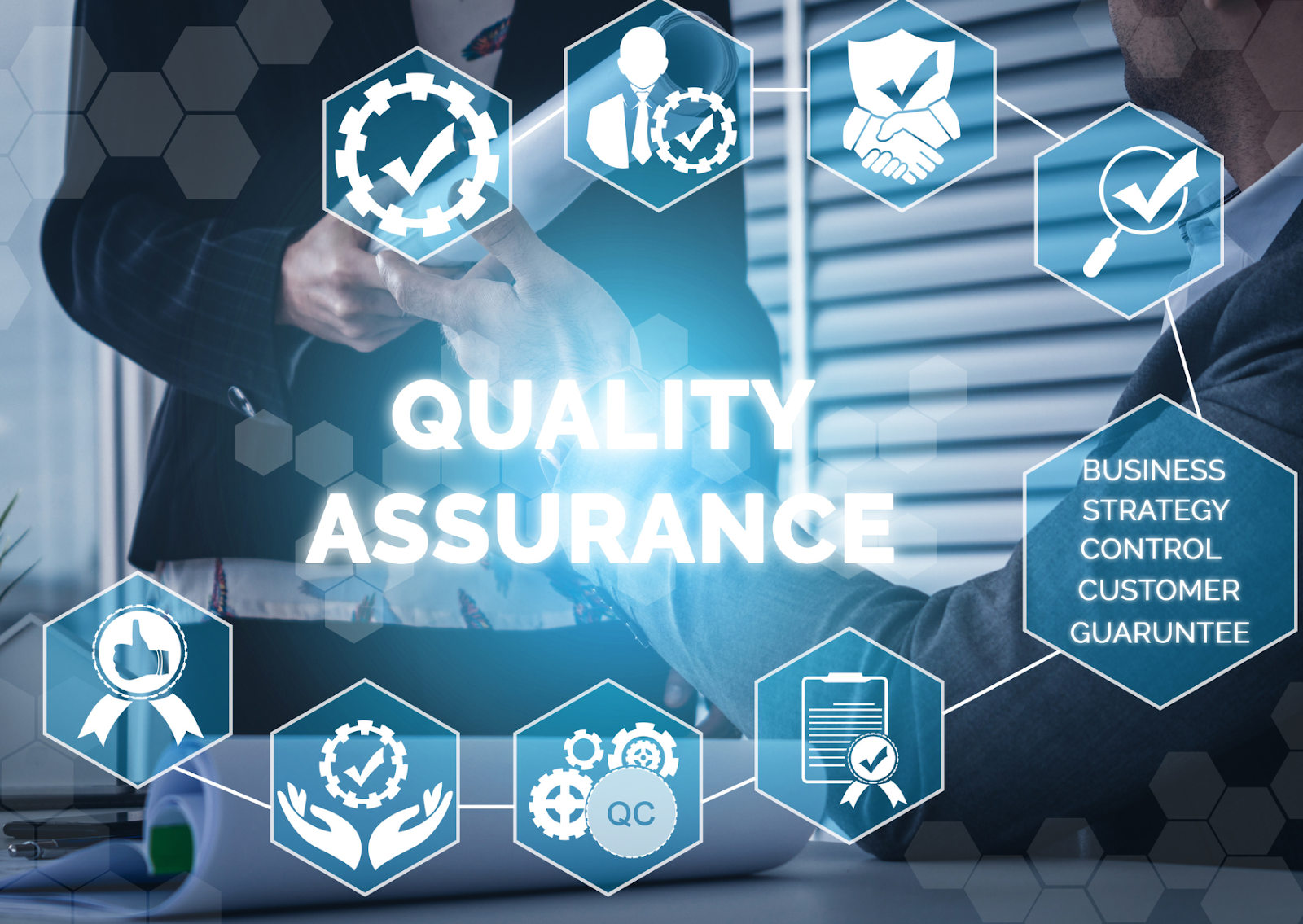Why is Quality Assurance essential in development processes?
In today's software development, quality assurance (QA) is often considered late in the process, sometimes even just before the release: “it must be enough if the tester does an acceptance test at the end”. However, this approach can have serious consequences, including unexpected bugs, high rework costs, release delays and reduced customer satisfaction. In a world where software solutions are becoming ever more complex and user requirements ever more demanding, it is crucial to integrate QA into the development process right from the start.
A structured and early QA approach not only enables higher product quality, but can also make a significant contribution to making development cycles more efficient and reducing costs in the long term. But where do you start? This guide shows you step by step how you can successfully integrate QA into your processes, what challenges arise and what proven methods are available.
Step 1 - Identify potential for improvement with a quick check
Before you dive deep into the topic of quality assurance, you should get an overview of your current processes. Many companies do not even know exactly where quality problems arise because they have not carried out a systematic analysis. This is exactly where our QA checklist comes in. With a structured checklist, you can check your existing processes for gaps and identify potential for improvement to increase your quality.
The checklist covers topics from the definition of requirements, the implementation of test strategies, the implementation of defect management through to release management. Once you know where you stand, you can take targeted measures to improve your QA processes.
Important aspects of the QA checklist:
- Are clear quality requirements defined?
- Are tests integrated into the development process at an early stage?
- Is there a uniform test strategy?
- Are manual and automated tests combined sensibly?
More quality. Fewer bugs. Your ultimate QA checklist!
Optimize your software quality with a tried and tested checklist - from requirements to release!
Step 2 - A QA assessment identifies the potential for improvement
Once you have gained an overview of your existing processes, the next step is a detailed QA assessment. This is not only about identifying weak points, but also about developing a long-term test strategy that is tailored to your individual requirements. Such an assessment looks at various dimensions of quality assurance, from test automation and the optimization of existing QA tools to the optimal integration of test processes into agile development methods.

During the analysis phase, questions such as: Are tests integrated into the development process at an early stage? Are there clear quality objectives for each phase of the project? How is the interaction between developers, testers and product owners organized? The answers to these questions provide valuable insights into where there is room for improvement and how you can optimize your quality assurance in a targeted manner.
In addition, a QA assessment can help to establish a company-wide quality assurance culture. After all, QA is not just the task of a specific team, but should be understood as a holistic process in which everyone involved plays a part.
Optimize your software quality with our QA assessment!
Get a professional as-is analysis of your QA processes & discover targeted potential for improvement.
Step 3 - Targeted improvement of processes - Structured test activities as a success factor
Once a test strategy has been defined, the next step is implementation. Structured testing activities are the key to improving software quality. A good test strategy considers both automated and manual testing, as both have their specific advantages. Automated tests are particularly effective for repeatable scenarios and regression tests, while manual tests are essential for exploratory test methods or complex UX tests, for example.
Another key aspect is continuous integration and testing throughout the entire development process. By implementing CI/CD pipelines (Continuous Integration / Continuous Deployment), test cycles can be accelerated and errors detected more quickly. This means that code changes are automatically tested before they are transferred to the main development line. This reduces the risk of faulty code delaying the development process or, in the worst case, leading to production problems.
Important measures for QA integration:
- Introduction of automated tests for stable regression
- Regular code reviews for early error detection
- Suitable test activities for every requirement
- Integration of explorative and usability tests for a better user experience
Step 4 - Making success measurable - The right metrics for evaluating QA measures
A sustainable QA strategy is only effective if its success can be measured. It is therefore crucial to define relevant KPIs (Key Performance Indicators) that demonstrate the progress and effectiveness of quality assurance measures. One frequently used metric is the error rate per release. It provides information on how many errors have been detected in a particular software version and whether quality is improving over time.

Another important criterion is test coverage, i.e. the proportion of the code that is covered by automated tests. The higher the test coverage, the lower the risk that untested areas of the application will contain unexpected errors. However, test coverage should not be viewed in isolation - more important than the highest possible percentage is the selection of meaningful tests that actually cover relevant functionalities.
In addition to quantitative metrics, qualitative analyses also play a role. Feedback from developers, testers and end users can provide valuable information on where there is still room for improvement. Regular retrospectives and reviews help to continuously optimize QA processes and incorporate new findings into future development cycles.
Conclusion: QA as an indispensable component of successful software development
Integrating QA into development processes is not a one-off step, but a continuous improvement process. Companies that take quality assurance seriously from the outset benefit not only from more stable and reliable software solutions, but also from more efficient development processes and more satisfied users.
The path to a comprehensive QA strategy begins with a well-founded analysis and the identification of potential for improvement. With the help of a detailed evaluation through a QA assessment, targeted measures can be taken to optimize test processes and ensure higher software quality in the long term. Structured test activities, automation and continuous integration are key building blocks for a successful QA strategy.
Take your QA strategy to the next level
Download our QA checklist to analyze the current state of your quality assurance or contact us for a customized QA Maturity Assessment.
